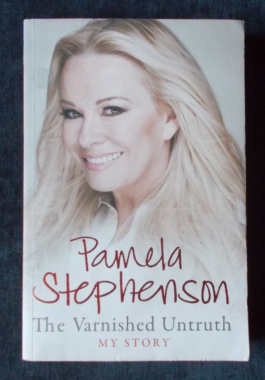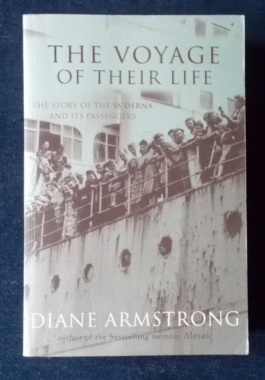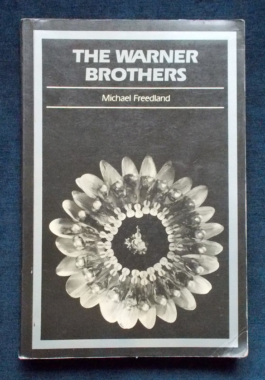-
 Charles I, king of England, waged a civil war (1642-9) that cost the lives of one in ten Englishmen, but in 1649 Parliament was hard put to find a lawyer with the skill and daring to prosecute the defeated King, who claimed to be above the law. The man they briefed was the radical lawyer John Cooke. His Puritan conscience, political vision, and love of civil liberties gave him the courage to bring the King's trial to its dramatic conclusion: the creation of the English Republic. Cooke would pay dearly for role in the trial. Charles I was found guilty and beheaded, but eleven years later Cooke himself was arrested, tried, and brutally executed at the hands of Charles II. Robertson, an internationally renowned human rights lawyer, provides a vivid new reading of the tumultuous Civil War years, exposing long-hidden truths: that the King was guilty as charged, that his execution was necessary to establish the sovereignty of Parliament, that the regicide trials were rigged and their victims should be seen as national heroes. John Cooke sacrificed his own life to make tyranny a crime. His trial of Charles I, the first trial of a head of state for waging war on his own people, became a forerunner of the trials of Augusto Pinochet, Slobodan Milosevic and Saddam Hussein.
Charles I, king of England, waged a civil war (1642-9) that cost the lives of one in ten Englishmen, but in 1649 Parliament was hard put to find a lawyer with the skill and daring to prosecute the defeated King, who claimed to be above the law. The man they briefed was the radical lawyer John Cooke. His Puritan conscience, political vision, and love of civil liberties gave him the courage to bring the King's trial to its dramatic conclusion: the creation of the English Republic. Cooke would pay dearly for role in the trial. Charles I was found guilty and beheaded, but eleven years later Cooke himself was arrested, tried, and brutally executed at the hands of Charles II. Robertson, an internationally renowned human rights lawyer, provides a vivid new reading of the tumultuous Civil War years, exposing long-hidden truths: that the King was guilty as charged, that his execution was necessary to establish the sovereignty of Parliament, that the regicide trials were rigged and their victims should be seen as national heroes. John Cooke sacrificed his own life to make tyranny a crime. His trial of Charles I, the first trial of a head of state for waging war on his own people, became a forerunner of the trials of Augusto Pinochet, Slobodan Milosevic and Saddam Hussein. -

Everything You Learnt At School, But Have Since Forgotten...Perplexed by Pythagoras? Undone by famous dates? Can't tell your Magnesium from your Manganese? Then this is the book for you. Divided into classroom subject-themed chapters, The Universal Crammer is packed full of key lessons that easily slip the mind once O-levels and GCSEs become a distant memory. Flex your dormant brain muscles and see how much you can remember from those days of staring at the white board/black board (depending on whether you're from the era of computers or exercise books). The ideal nostalgia present for any know-it-all in the family. Re-discover facts and theories, from geography to history, from maths to English, including: Remember LSD? No, not the illegal drug, but the geological process of long shore drift of course. Then there's osmosis, meiosis, photosynthesis... All those similar sounding biological processes that ring a distant bell. Is carpe diem the limit of your Latin? Declensions, conjugations and those Latin tables you were made to learn. Mean, median and mode...is that someone who's stingy, mediocre, yet stylish? I kicked the ball. A classic S.V.O. sentence. S.V.O? Elementary, my dear - the basics of the linguistic typology: subject; verb; object. Loads of fun for anyone.
-
 A complicated childhood in Australia, a bold move to London, being a woman in a man's world on Not the Nine O'Clock News, becoming Mrs Billy Connolly, motherhood, career changes and then Strictly Come Dancing - told in her own inimitable style, The Varnished Untruth is Pamela Stephenson's own story: a challenging story and one that can only engender respect and admiration. Illustrated with colour and black and white photographs.
A complicated childhood in Australia, a bold move to London, being a woman in a man's world on Not the Nine O'Clock News, becoming Mrs Billy Connolly, motherhood, career changes and then Strictly Come Dancing - told in her own inimitable style, The Varnished Untruth is Pamela Stephenson's own story: a challenging story and one that can only engender respect and admiration. Illustrated with colour and black and white photographs. -
 In 1858, as a result of the mutiny, the sovereignty of India passed from the East India Trading Company to the British Crown; and the then Governor-General, Lord Canning, was given the more romantic title of Viceroy. This book covers the Viceroys from 'Clemency' Canning to Mountbatten and is concerned with the men who held an office, which, in its combination of responsibility and splendor, is without parallel in modern history. There are figures as diverse as the craggy John Lawrence and the charming, urbane Dufferin; the dynamic Mayo and the wayward Lytton; the humble, high-minded Ripon and the brilliant, overbearing Curzon; the patrician Lansdowne and the self-made lawyer Reading. They are portrayed against the background of their times in India; much use being made of contemporary letters, many of them unpublished. There are also their wives, ranging from the beautiful and tragic Lady Canning to the redoubtable Lady Willingdon. It is by no means confined to matters of state, giving a lively and nostalgic picture of the ceremonial and social side of Viceregal life over a century, and the delights and discomforts of reigning in the Government Houses of Simla, Calcutta and Delhi, surrounded by a retinue of secretaries, body guards, ADCs and an army of servants; progresses by elephant, sedan-chair, houseboat, bullock cart and train and in general, an overall picture of a series of rulers who were, on the whole, suited to their office in which some achieved greatness and most were successful. Illustrated with black and white photographs.
In 1858, as a result of the mutiny, the sovereignty of India passed from the East India Trading Company to the British Crown; and the then Governor-General, Lord Canning, was given the more romantic title of Viceroy. This book covers the Viceroys from 'Clemency' Canning to Mountbatten and is concerned with the men who held an office, which, in its combination of responsibility and splendor, is without parallel in modern history. There are figures as diverse as the craggy John Lawrence and the charming, urbane Dufferin; the dynamic Mayo and the wayward Lytton; the humble, high-minded Ripon and the brilliant, overbearing Curzon; the patrician Lansdowne and the self-made lawyer Reading. They are portrayed against the background of their times in India; much use being made of contemporary letters, many of them unpublished. There are also their wives, ranging from the beautiful and tragic Lady Canning to the redoubtable Lady Willingdon. It is by no means confined to matters of state, giving a lively and nostalgic picture of the ceremonial and social side of Viceregal life over a century, and the delights and discomforts of reigning in the Government Houses of Simla, Calcutta and Delhi, surrounded by a retinue of secretaries, body guards, ADCs and an army of servants; progresses by elephant, sedan-chair, houseboat, bullock cart and train and in general, an overall picture of a series of rulers who were, on the whole, suited to their office in which some achieved greatness and most were successful. Illustrated with black and white photographs. -
 The figure of the governess is very familiar from nineteenth-century literature, but much less is known about the governess in reality. This book is the first rounded exploration of what the life of the home schoolroom was actually like. Drawing on original diaries and a variety of previously undiscovered sources, Kathryn Hughes describes why the period 1840-80 was the classic age of governesses, examining their numbers, recruitment, teaching methods, social position and prospects. The governess provides a key to the central Victorian concept of the lady. Her education consisted of a series of accomplishments designed to attract a husband able to keep her in the style to which she had become accustomed from birth. Becoming a governess was the only acceptable way of earning money open to a lady whose family could not support her in leisure. Being paid to educate another woman's children set in play a series of social and emotional tensions. The governess was a surrogate mother, who was herself childless, a young woman whose marriage prospects were restricted and a family member who was sometimes mistaken for a servant.
The figure of the governess is very familiar from nineteenth-century literature, but much less is known about the governess in reality. This book is the first rounded exploration of what the life of the home schoolroom was actually like. Drawing on original diaries and a variety of previously undiscovered sources, Kathryn Hughes describes why the period 1840-80 was the classic age of governesses, examining their numbers, recruitment, teaching methods, social position and prospects. The governess provides a key to the central Victorian concept of the lady. Her education consisted of a series of accomplishments designed to attract a husband able to keep her in the style to which she had become accustomed from birth. Becoming a governess was the only acceptable way of earning money open to a lady whose family could not support her in leisure. Being paid to educate another woman's children set in play a series of social and emotional tensions. The governess was a surrogate mother, who was herself childless, a young woman whose marriage prospects were restricted and a family member who was sometimes mistaken for a servant. -
 This book is described as expertly informative for the intending tourist or the armchair tourist. The magnetic fields of Denmark, Norway and Sweden are visited as well as the less-trodden ways of Finland, Iceland and Greenland. The author is credited with a good eye for spectacular natural phenomena: the fire and snow in Iceland, Greenland's icy mountains, water, islands and sky as well as an interest in historical entertainments. From Kirkus Reviews: "The solid information outweighs the cafe chatter. However, the author cannot resist some sniggering appreciations of sex mores in Sweden and Denmark, which leads to an inane 'interview' with a quartet of Swedish damosels and a happy view of the nude bathing of a Finnish poet's wife. " Illustrated with numerous colour and black and white photographs.
This book is described as expertly informative for the intending tourist or the armchair tourist. The magnetic fields of Denmark, Norway and Sweden are visited as well as the less-trodden ways of Finland, Iceland and Greenland. The author is credited with a good eye for spectacular natural phenomena: the fire and snow in Iceland, Greenland's icy mountains, water, islands and sky as well as an interest in historical entertainments. From Kirkus Reviews: "The solid information outweighs the cafe chatter. However, the author cannot resist some sniggering appreciations of sex mores in Sweden and Denmark, which leads to an inane 'interview' with a quartet of Swedish damosels and a happy view of the nude bathing of a Finnish poet's wife. " Illustrated with numerous colour and black and white photographs. -
 Or: Twenty Reasons Why Growing Old is Great! Virginia takes the reader on a wacky journey where growing old is not a loss but a gain. If your memory's going, you can forget all the ghastly men you slept with...you can have the fun of comparing all your ailments with other oldies...and you can be a legitimate bore since you're in your 'anecdotage'. Includes fun little verses as well. A really good guide to growing old disgracefully.
Or: Twenty Reasons Why Growing Old is Great! Virginia takes the reader on a wacky journey where growing old is not a loss but a gain. If your memory's going, you can forget all the ghastly men you slept with...you can have the fun of comparing all your ailments with other oldies...and you can be a legitimate bore since you're in your 'anecdotage'. Includes fun little verses as well. A really good guide to growing old disgracefully. -

Marseilles, August, 1948: 545 passengers board the clapped-out SS Derna with light suitcases and heavy hearts, leaving behind the familiar world to face an uncertain future in Australia and New Zealand. They came from displaced persons camps in Germany, death camps in Poland, gulags in Siberia. There were those who had been hunted by the Nazis and those who had welcomed them; those who had followed the Communists and those who had fled them. Among them were a Russian princess, a Polish ghetto fighter, an Estonian submarine commander and sixty one Jewish orphans. As conditions on board deteriorated over the three month journey, tensions and violence simmered above and below decks, But romances, affairs and seductions also flourished and life long friendships were formed. Diane Armstrong sailed on the Derna with her parents when she was nine years old. She managed to locate over 100 passengers and has recreated the voyage through their recollections, memorabilia and archival documents, tracing what became of their hopes and their dreams. Illustrated with black and white photographs.
-
 The story of four of the pioneers of the moving picture industry: Jack, Sam, Harry and Abe. For two generations, they personified Hollywood and the moguls who dictated the movie going habits of the world. The Children of poor immigrants from Tsarist Russia grew up to shape one of the wealthiest and most glamorous industries in the world. Jack Warner came to personify the cliché of the self-made tycoon. It was the Warners who brought sound to the cinema with the first 'talkie' - The Jazz Singer - then launched the musical and the gangster genre. This is also the story of the stars who became internationally famous through Warner Brothers' films. Illustrated with black and white photographs.
The story of four of the pioneers of the moving picture industry: Jack, Sam, Harry and Abe. For two generations, they personified Hollywood and the moguls who dictated the movie going habits of the world. The Children of poor immigrants from Tsarist Russia grew up to shape one of the wealthiest and most glamorous industries in the world. Jack Warner came to personify the cliché of the self-made tycoon. It was the Warners who brought sound to the cinema with the first 'talkie' - The Jazz Singer - then launched the musical and the gangster genre. This is also the story of the stars who became internationally famous through Warner Brothers' films. Illustrated with black and white photographs.


